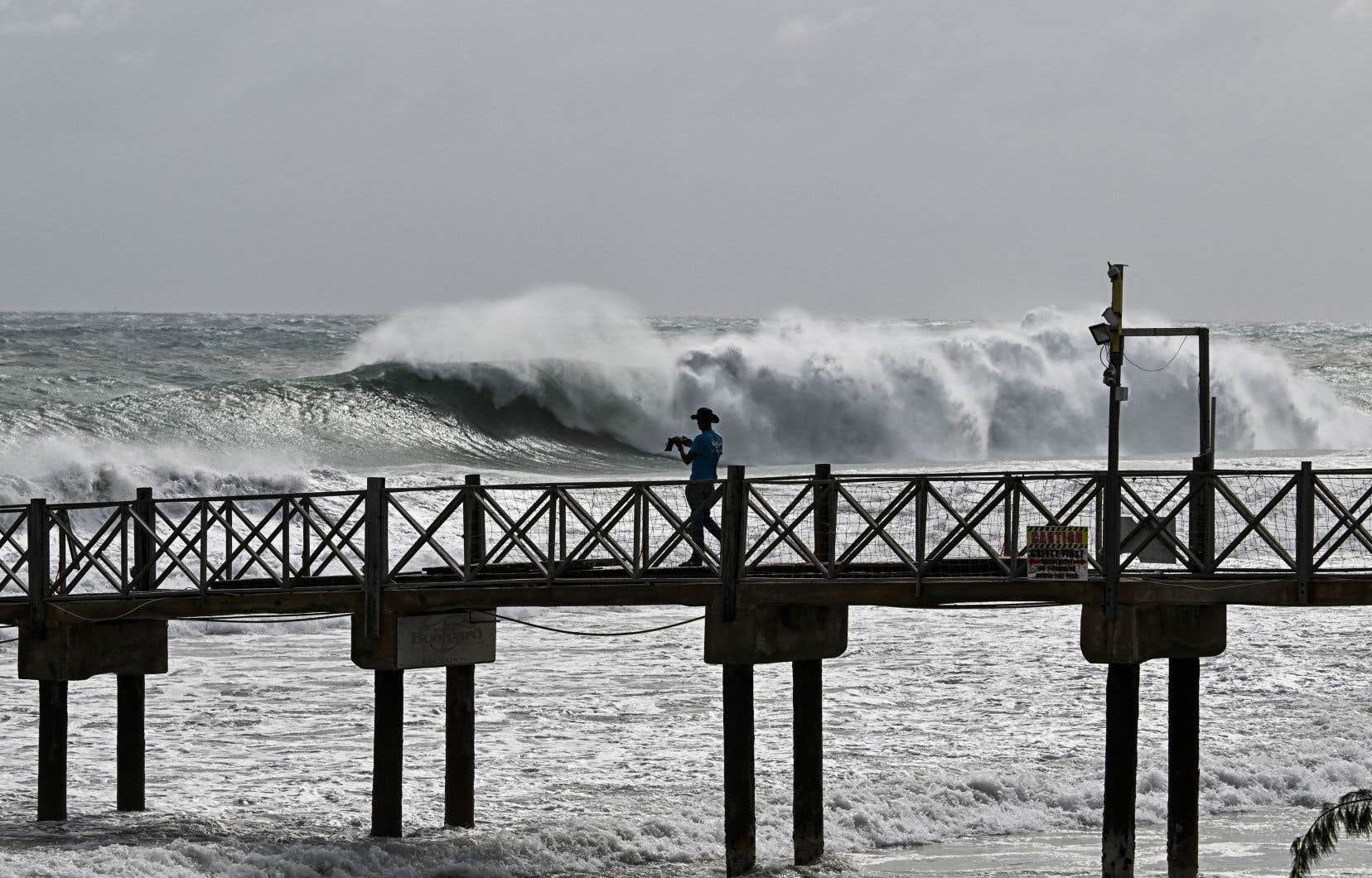The Hurricane Berylwhich is sweeping across the southeastern Caribbean at maximum strength, caused significant damage and at least one death in the English-speaking archipelago of Saint Vincent and the Grenadines on Tuesday, but is expected to lose some intensity off the coast of Jamaica on Wednesday, according to the American National Hurricane Center (NHC).
At around 11 p.m. local time on Monday (3 a.m. GMT on Tuesday), the NHC passed Beryl in category 5, the highest on the Saffir-Simpson scale used to describe the intensity of storms. This corresponds to winds greater than 252 km/h and “potentially catastrophic” effects.
At 0600 GMT on Tuesday, in its first bulletin of the day, the NHC said winds were strengthening to nearly 270 km/h. It is now forecast, according to the 0900 GMT bulletin, that Beryl “weakens” later on Tuesday but the danger remains.
“The eye of Beryl “will continue to move rapidly across the southeastern and central Caribbean Sea today (Tuesday) and is expected to pass near Jamaica on Wednesday and the Cayman Islands on Thursday,” the NHC said. It “is still expected to be near major hurricane intensity,” it added.
Before being upgraded to Category 5, the eye of the hurricane devastated Carriacou, an island in Grenada known for its beauty, on Monday.
Winds were measured at up to 240 km/h and “within half an hour, Carriacou was flattened,” Grenadian Prime Minister Dickon Mitchell told reporters. “The state of emergency remains in effect. Stay home,” he urged on Facebook.
“It is clear that the climate crisis is pushing disasters to new record levels of destruction,” said UN Climate Change chief Simon Stiell, whose family in Carriacou is among the victims. His office said his late grandmother’s home was destroyed and his parents’ home was badly damaged.
“The climate crisis is getting worse, and faster than expected,” which requires in response “much more ambitious climate action from governments and businesses,” he added in a statement to AFP on Monday night.
On the neighboring archipelago of Saint Vincent and the Grenadines, Beryl has caused devastation and left at least one person dead, according to Prime Minister Ralph Gonsalves.
“Unfortunately, there is one person killed. There could be more victims, we are not sure,” he added in a video on Facebook, and “90% of the homes were badly damaged or destroyed on one of the islands where the airport roof was torn off.”
“Earliest” hurricane
In Barbados, homes and businesses were flooded and fishing boats damaged in Bridgetown. It appears to have been a “narrow escape,” Interior and Information Minister Wilfred Abrahams said in a video, although gusty winds are still feared.
On the French island of Martinique, which is on tropical storm alert, as are the south of Haiti and the Dominican Republic, the wind has strengthened since Sunday afternoon, with occasional heavy showers, but not exceptional, according to AFP correspondents on the ground.
Some 10,000 customers were left without electricity in Martinique in various municipalities, according to EDF.
Beryl is the first hurricane of the season in the Atlantic.
A weather event of this scale is extremely rare so early in the hurricane season, which runs from early June to late November in the United States.
The American meteorological observatory (NOAA) had predicted at the end of May an extraordinary season and the possibility of four to seven hurricanes of category 3 or more.
These forecasts are linked in particular to the expected development of the La Nina weather phenomenon, as well as to the very high temperatures of the Atlantic Ocean according to NOAA.
North Atlantic temperatures have been trending steadily for more than a year at record levels of warmth, well above historical records, according to public data from the US meteorological observatory NOAA.
